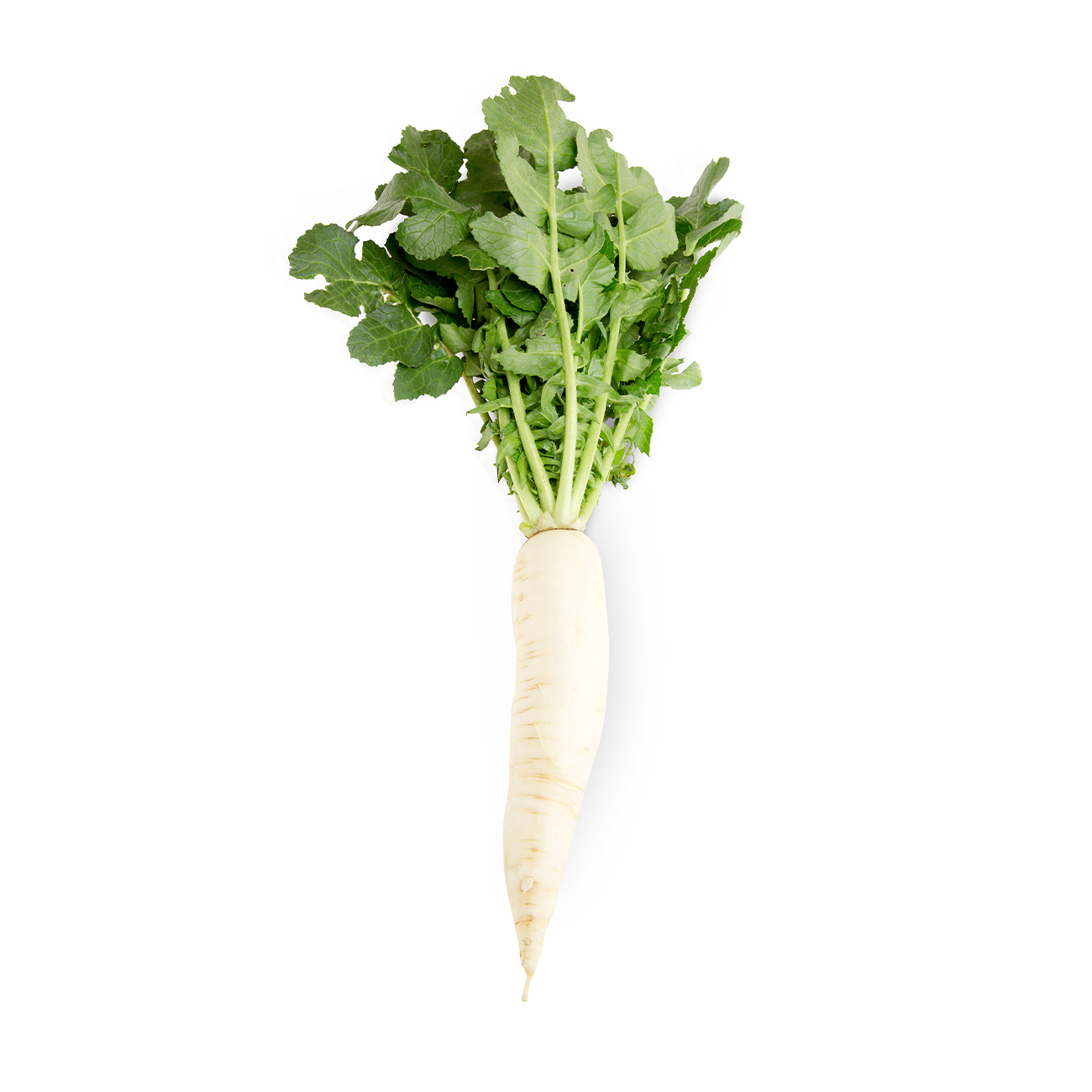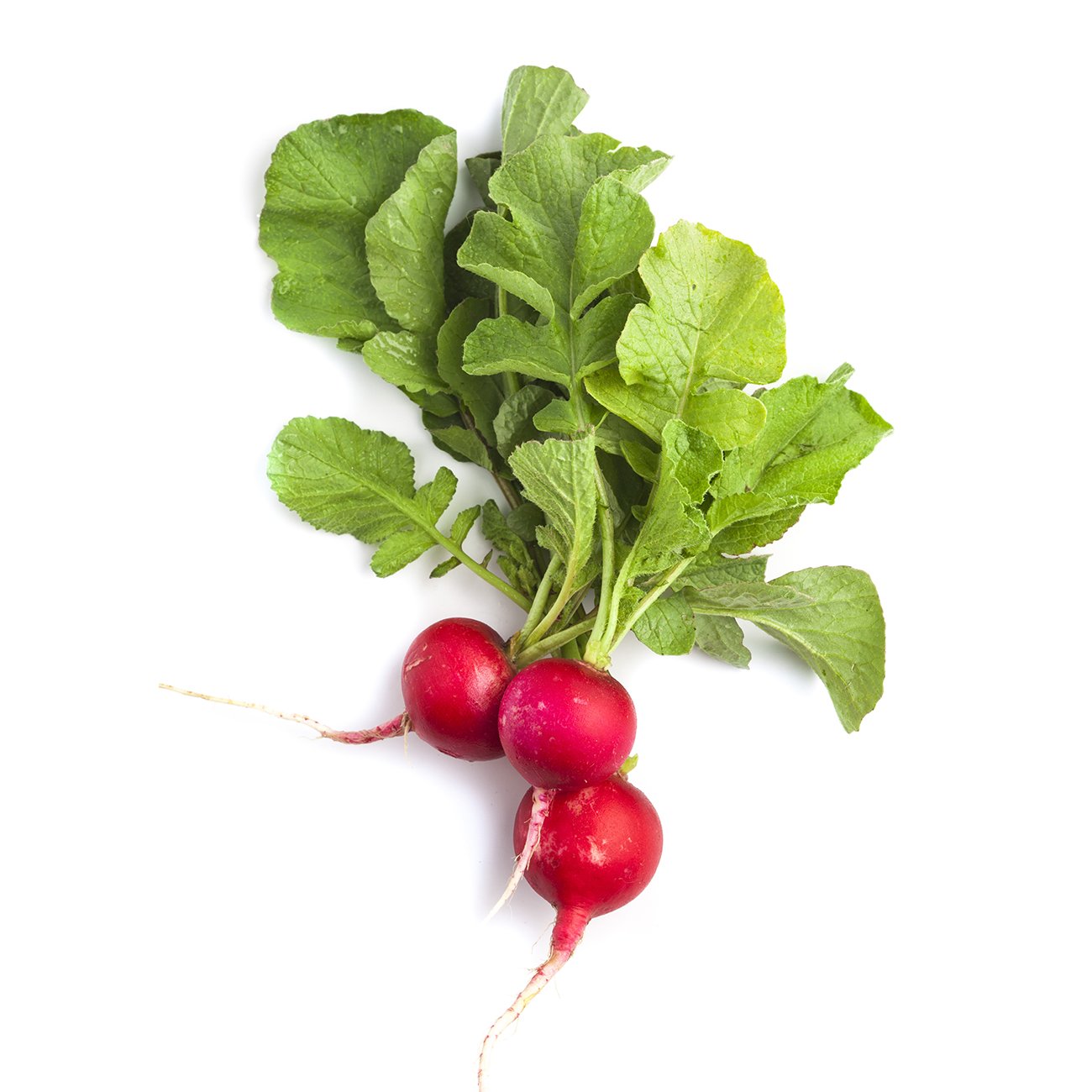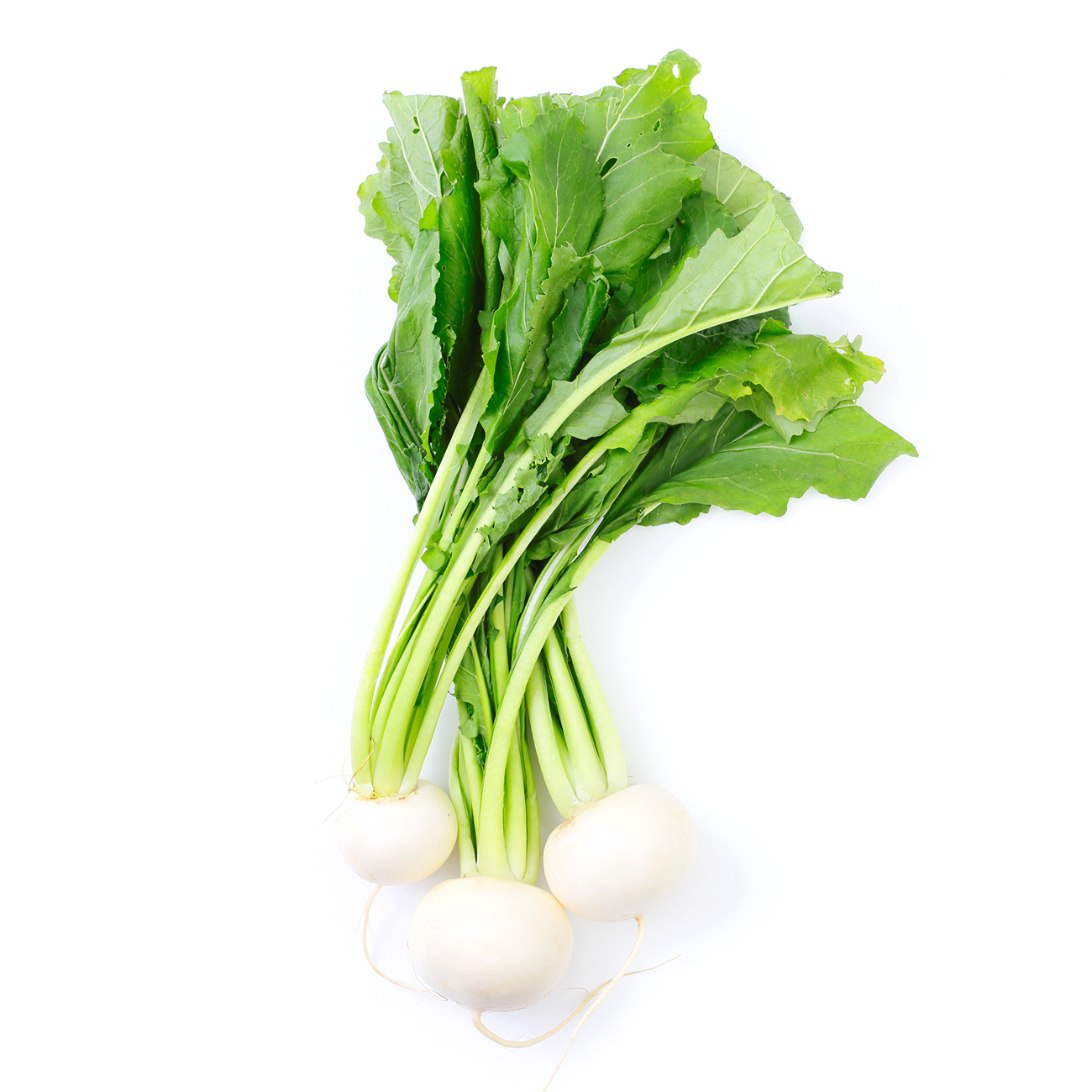Daikon
Many types of yummy Japanese pickles are made with this veg.
Alternative Name
Chai tow, Chinese radish, giant radish, Japanese radish, Korean radish, lo baak, lo bok, mooli, Oriental radish, white radish
Scientific Name
Raphanus sativus var. longipinnatus
Health benefits
Daikon is a mild-flavoured, very large, juicy white Asian radish. It is typically about 5cm in diameter and can be up to 40cm long. It can be eaten raw or cooked, which is unusual for a radish.
-
Harvesting
Roots of bunched or topped radish should be of uniform and similar shape for the variety, well formed, smooth and firm but of tender texture. They should be free of growth or harvest damage, and free of decay, disease or insects. Bunched radish tops should be fresh in appearance, turgid, and free of freeze injury or other serious injury, seed stalk, yellowing or other discolouration, disease, decay, or insects.Postharvest storage temperature
Optimum storage temperature is 0°C. Rapid cooling is essential to achieve the full storage potential of both bunched and topped roots. Radish is suitable for icing to maintain temperature and contribute moisture for retaining a crisp texture. Daikon-type radish may last 3–4 months under these conditions.Controlled atmosphere storage
Atmospheres of 1–2% O2 and 2-3% CO2 are slightly beneficial in maintaining quality of topped radish when storage temperatures are 5–7°C. Controlled atmosphere helps retard the re-growth of shoots and rootlets in 'topped and tailed' roots. However, exposure to controlled atmospheres above 7°C will result in the development of off-flavours, browning and soft rot.Ethylene sensitivity
Daikon is not sensitive to ethylene. Bunched tops may exhibit yellowing with prolonged storage and ethylene exposure.Humidity storage
Daikon should be stored at 95–100% relative humidity to reduce water loss.Disease & infection
Bacterial black spot is a problem in some production locations and will develop in postharvest storage at warmer than optimum temperatures. Refrigeration is the primary control but washing roots in chlorinated water is reported to significantly control this disease. Prompt cooling, chlorination, and refrigeration are also effective in controlling bacterial soft rot. Rhizotonia spp. lesions may develop in storage at warmer than optimal temperatures but can be effectively controlled in the field. Grey mould and watery soft rot can develop, especially around harvest wounds, even at temperatures below 5°C. -
Scrub and trim before use. Keep in vegetable drawer of fridge.
Nutrition information
| Qty per serve | % RDI per serve | Qty per 100g | |
|---|---|---|---|
| Energy | 57 kJ | 1% | 76 kJ |
| Protein | 0.5 g | 1% | 0.6 g |
| Fat, total | 0.1 g | 0% | 0.1 g |
| – saturated | 0 g | 0% | 0 g |
| Carbohydrate | 1.9 g | 1% | 2.5 g |
| – sugars | 1.9 g | 2% | 2.5 g |
| Dietary fibre, total | 1.2 g | 4% | 1.6 g |
| Sodium | 16 mg | 1% | 21 mg |
| Vitamin C | 17 mg | 41% RDI | 22 mg |
Note: % RDI are based on an average adult diet of 8700 kJ. Your daily intakes may be higher or lower depending on your energy needs. RDI = Recommended Dietary Intake; ESADDI = Estimated Safe and Adequate Daily Dietary Intake.

You might also like
Veggy tip
Treat daikon like you would carrots. To maximise flavour, crunch and nutrient content, eat raw—you can also stir-fry, steam, bake or use in soups.



